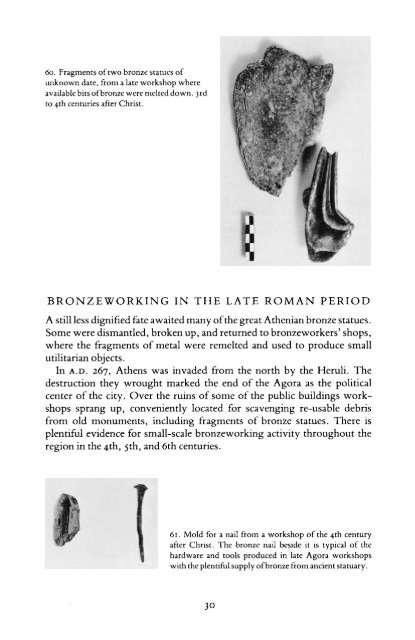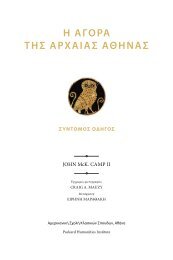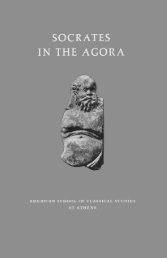Create successful ePaper yourself
Turn your PDF publications into a flip-book with our unique Google optimized e-Paper software.
60. Fragments of two bronze statues of<br />
unknown date, from a late workshop where<br />
available bits ofbronze were melted down. 3rd<br />
to 4th centuries after Christ.<br />
BRONZEWORKING IN THE LATE ROMAN PERIOD<br />
A still less dignified fate awaited many ofthe <strong>gr</strong>eat Athenian bronze statues.<br />
Some were dismantled, broken up, and returned to bronzeworkers’ shops,<br />
where the fragments of metal were remelted and used to produce small<br />
utilitarian objects.<br />
In A.D. 267, Athens was invaded from the north by the Heruli. The<br />
destruction they wrought marked the end of the Agora as the political<br />
center of the city. Over the ruins of some of the public buildings work-<br />
shops sprang up, conveniently located for scavenging re-usable debris<br />
from old monuments, including fragments of bronze statues. There is<br />
plentiful evidence for small-scale bronzeworking activity throughout the<br />
region in the 4th, Sth, and 6th centuries.<br />
61, Mold for a nail from a workshop of the 4th century<br />
after Christ. The bronze nail beside it is typical of the<br />
hardware and tools produced in late Agora workshops<br />
with the plentiful supply ofbronze from ancient statuary.











